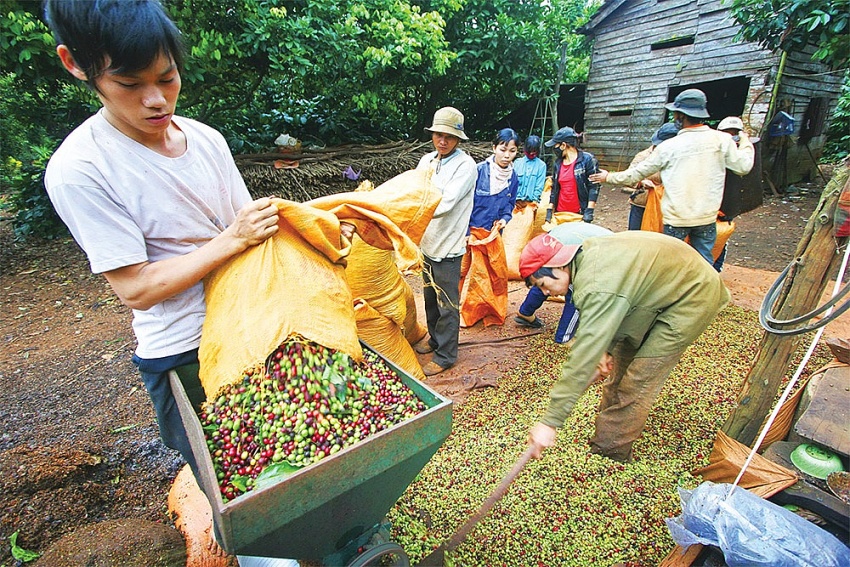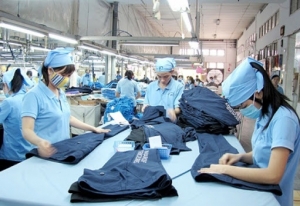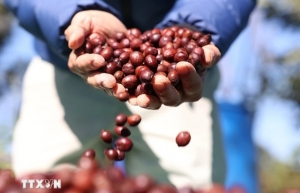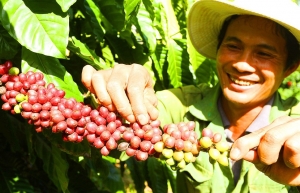Potential price hikes weigh on top coffee chains
Pricing is a concern for many coffee traders as costs have been increasing for nearly a year, reaching nearly VND130,000 ($5.40) per kilogramme last weekend. The cost a year ago was typically less than half that figure.
 |
| Potential price hikes weigh on top coffee chains |
Nguyen Duc Thanh, founder of the AM Café system with five branches in Ho Chi Minh City, said that although the price of roasted coffee was increasing, raising the selling price could cause his shops to lose customers. “Just increasing the price 5-10 per cent per cup of coffee means some customers never return. I choose to reduce profits instead of losing customers,” Thanh noted.
AM Café has a contract to buy raw coffee from a number of cooperatives in the Central Highlands at preferential prices. It then orders roasted coffee according to its own recipe. Each month, this chain consumes about 250kg of roasted and ground coffee.
“As a result, the price of our input materials has only increased slightly. However, the reserve on low-priced goods is only enough to last until the end of Q2. After that, we have to buy goods at market prices, so I’m not sure if we can stabilise the selling price until that time,” he added.
According to the assessment of some coffee businesses, the increase in retail prices at stores is understandable because many roasters have announced plans to increase raw material prices, while the reserves of businesses are limited.
Nguyen Duc Hung, director of Napoli Coffee Import-Export Production Trading JSC, said that the company, which has about 80 stores nationwide, was forced to increase prices by 5 per cent to stabilise operations and maintain the market.
“We only store enough raw coffee for one month of sales, so the price impact is very strong,” Hung said. “Since October last year, we lost over $416,000 due to the rapid increase in raw material prices.”
Meanwhile, founder of KA coffee Vu Truong Giang, with five stores in Hanoi and Ho Chi Minh City, said that the cost price of a retail cup of coffee has increased slightly. He predicts that an increase in selling prices is inevitable because raw coffee prices will continue to increase until the end of May, but the timing depends on the roadmap and current retail price of each business.
“After adjustments in 2023, the selling price of our coffee is already quite high. If it increases, I will do it at the end of the year when the economy shows more signs of recovery,” said Giang.
According to Do Duy Thanh, director of Horeca Business School, 80 per cent of the coffee service market is highly price sensitive, so businesses can significantly reduce customer numbers or consuming frequency if they decide to increase selling prices.
“The price of raw materials per kilogram has increased, but the actual usage rate per cup did not result in too much cost,” Thanh said. “Coffee beans that shops import are priced around $7.50-14.50 per kg depending on the segment, an increase of 20-30 per cent compared to before. However, a cup of coffee only uses about 8-25 grammes of ground coffee, so the impact will not be too great.”
In the next few months, if the price of coffee ingredients continues to increase, shops will be forced to adjust accordingly. The expected increase will be from 5-10 per cent per cup for popular coffee and 10-15 per cent per cup for large shops or chains, he predicted.
Currently, major coffee chains such as The Coffee House, Highlands Coffee, Trung Nguyen, Katinat, and Starbucks have not made any move to increase selling prices.
Food and beverage sales solutions provider iPOS.vn predicts that the market will not witness a massive price increase this year, despite the daily increase in raw coffee prices.
“The valuation of the beverage industry has grown 10-15 per cent after two years of adjustment. Therefore, beverage brands this year will diversify promotion programmes to stimulate customer consumption instead of continuing to looking for ways to increase prices,” an iPOS.vn representative noted.
iPOS.vn’s 2023 business market report in Vietnam shows that more than 30 per cent of Vietnamese people go to coffee shops 1-2 times a week, and 6 per cent go every day. Nearly 60 per are still willing to spend nearly $3 for a coffee.
According to data from the Vietnam Coffee-Cocoa Association, coffee consumption per capita in Vietnam has increased from 1.7kg of coffee in 2015 to nearly three kg in 2023. By 2025, it is forecasted that domestic coffee consumption will reach 270,000-300,000 tonnes a year.
According to Euromonitor, the size of the Vietnamese coffee market was estimated to reach more than $458.3 million in 2023. The domestic coffee industry is expected to grow strongly going forward with a compound annual growth rate around 7.6 per cent with an expected market size of more than $691 million by 2028.
 | Export picture brightening in Q1 Export performance in the first quarter of this year has exposed bright spots with diverse sectors managing positive growth. Businesses, however, have also spotted ‘dark areas’ and need to come up with suitable remedies. |
 | Vietnam – EU’s second biggest coffee supplier in 2023 With 652,000 tonnes of coffee exported to the EU worth 1.66 billion USD in 2023, Vietnam was the second biggest coffee supplier of the EU in terms of volume and third largest supplier in terms of value. |
 | Cost increase issues put coffee purchasers on alert Global supply tensions are driving the world’s coffee export prices to high levels, with supply shortages potentially beneficial to large coffee-exporting countries like Vietnam. |
What the stars mean:
★ Poor ★ ★ Promising ★★★ Good ★★★★ Very good ★★★★★ Exceptional
Related Contents
Latest News
More News
- Businesses ramp up production as year-end orders surge (December 30, 2025 | 10:05)
- Vietjet chairwoman awarded Labour Hero title (December 29, 2025 | 13:06)
- How to unlock ESG value through green innovation (December 29, 2025 | 10:03)
- AI reshapes media and advertising industry (December 29, 2025 | 08:33)
- FPT and GELEX sign deal to develop blockchain tech for global markets (December 29, 2025 | 08:29)
- Vietnam’s GDP forecast to grow by 9 per cent in 2026 (December 29, 2025 | 08:29)
- Women entrepreneurs are key to Vietnam’s economic growth (December 29, 2025 | 08:00)
- Vietnam's top 500 value-creating enterprises announced (December 27, 2025 | 08:00)
- The PAN Group shaping a better future with ESG strategy (December 26, 2025 | 09:00)
- Masan Consumer officially lists on HSX, marking the next phase of value creation (December 25, 2025 | 13:20)

 Tag:
Tag:




















 Mobile Version
Mobile Version